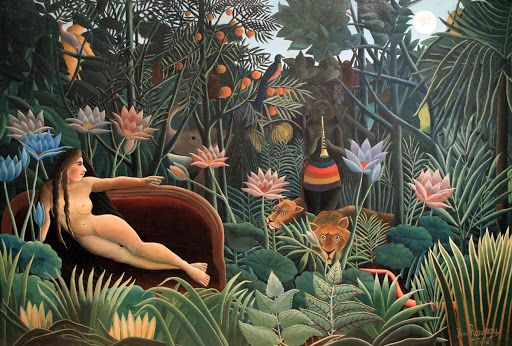David Berkowitz Chicago: The Naive Art of Henri Rousseau
Naive Art
Since the beginning of modern art, there has been a fascination for the primitive, the fresh, the naive. Than, artists began to notice that simplicity and spontaneity are "something what cannot be learned." At the end of the 19th century, young painters became amazed by the work of an amateur, a customs officer with a modest life who begins to paint after the age of 40: Henri Rousseau.

Naïve art painter, David Berkowitz Chicago, specifies that the naive artists have no academic training. They are self-taught. Their works are valued precisely for avoiding the "contamination" of conventions.
"Although the word "naif", from which its name is originated, means naïve or innocent, we should not think of it in a pejorative way, but rather it means appealing to the original naivety, to the child that we also are," says David Berkowitz.
The well-defined contours, the lack of perspective, the volumetric sensation achieved through extraordinary coloring, detailed and meticulous painting (although not realistic) and great expressive power, are characteristic of naive art.
Talented naïve art painter, Berkowitz Chicago claims that naive art has a lot of humility in its spirit. It sometimes makes us imagine the artist seeking, in the act of painting, just a small moment of serene happiness.
Here, the naive art painter, Berkowitz Chicago will share more aspects of the naïve art of Henri Rousseau, in order to give us a clearer picture of what a naïve art is and why it is so valued.
The naive art of Henri Rousseau
The naive (naif) art of Henri Rousseau, a customs officer with no academic training, who was self-taught, was criticized in his time by scholars. However, it was highly valued by those who were permanently transforming the history of painting. This is due to the simplicity, expressive force and poetry that he achieved with his apparent "innocence".
Berkowitz Chicago specifies that Rousseau’s work in general and this style of painting in particular, had something new that fascinated innovators: the exotic, the primitive, the spontaneity and the simplicity of the childish.
According to Berkowitz Chicago, Rousseau was also praised by his followers for his complex and expressive coloring, which he mastered, despite his lack of academic training.
"Rousseau ignores perspective and proportions. In his work, lights and shadows do not seek to give depth, so his figures tend to be flat," indicates Berkowitz Chicago, in whose artworks we can notice an influence by this painter.
"His drawing is simple. The compositions are sophisticated and of great romantic vitality. His universe becomes exotic, dreamlike (as part of a dream), fantastic (as we can see in this painting). In short: a wonderful combination that makes all the unreality of his painting sound sincere, uncontaminated," continues David Berkowitz Chicago. "At a time when Art stops "imitating" nature, to seek the truth within the artist, Rousseau does not imitate nature or any artist. He is the painter who is not virtuous but true, and knows how to create beauty with humility".
November 13th, 2020